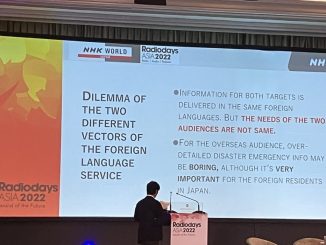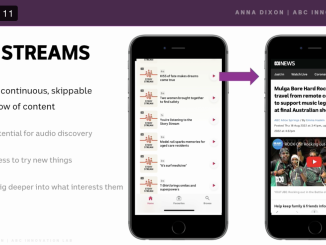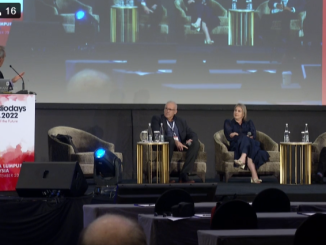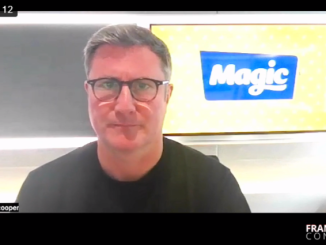
Emergency broadcasting #RDA2022
In the session titled ‘Emergency Broadcasting’ we heard from Australia and Japan how the ABC and NHK have innovated their readiness and organisation to function at the very best when urgent and reliable information is needed the most in case of natural disasters.Seiichi Kuriki, Senior Producer, Global strategy division, NHK WORLD, Japan, was fascinated by radio since childhood and that’s why he chose to join NHK’s international division when he grew up.He made a presentation about NHK’s innovations to provide foreign residents and visitors with more detailed disaster emergency information through broadcasts and webcasts.At first, NHK established its foreign language service for an overseas audience, but in recent years, the number of foreign residents in Japan has been increasing. NHK has included an initiative in its 2021-23 corporate plan to target them for the first time.However, there’s a dilemma that the foreign language service faces. It reaches overseas audience as well as foreigners in Japan, and information for both targets is delivered in the same foreign languages. But the needs of the two audiences are not the same. For the overseas audience, overdetailed disaster emergency info may be boring, although it is very important for foreign residents in Japan.They are addressing this issue in two ways through automation – Code table conversion for fixed pattern information, and AI Translation for freestyle, pattern less, real time information.In order to make it effective, Japan Meteorological Agency is linked with NHK and automatically shares immediate updates in case of strong earthquakes and tsunamis on the public broadcaster’s app and website.Along with automated bulletins, manual updates are also important as they’re more efficient in conveying information flexibly to meet the demand.At the moment, NHK’s technical team is considering applying text-to-speech technology to its multilingual service. In the future, automated bulletins and AI-translated subtitles may be used for podcasts, webcasts or radio broadcasts.Patrick Hession, Emergency Broadcast Lead, ABC, Australia, said that fired and floods are the biggest emergencies that need to be covered in Australia and “we’re focusing on those whose life and property are under immediate threat.”He said that coverage in natural disasters involves doing a bunch of fairly simple things properly and structuring them together to make it useful. It involves maintaining key contacts on ground, for which preparations should be made well in advance keeping in the mind various capacity constraints. It’s also very important to communicate plans clearly with teams and debrief them.“Audience respond and turn to trusted sources in emergencies as events become more serious, and radio is the most trusted source in Australia,” he said.In the last couple of years, ABC has launched an emergency website, which contains some timeless information which can be accessed anywhere, anytime. It also allows one to search for nearby incidents by linking to ABC Radio and digital coverage.He also stressed on managing growing audience expectations, better managing constraints and targeted coverage as important factors in emergency broadcasts. […]





